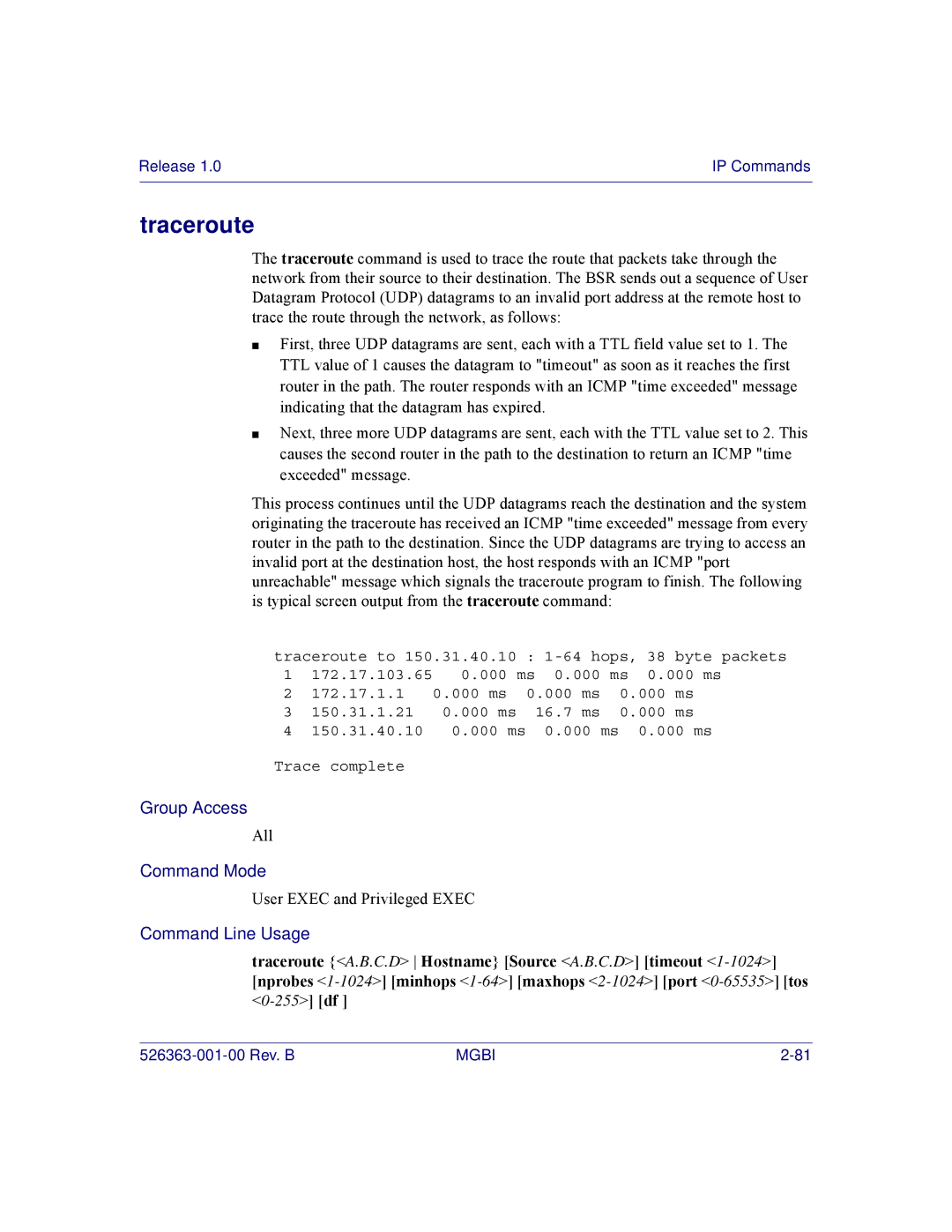Release 1.0 | IP Commands |
|
|
traceroute
The traceroute command is used to trace the route that packets take through the network from their source to their destination. The BSR sends out a sequence of User Datagram Protocol (UDP) datagrams to an invalid port address at the remote host to trace the route through the network, as follows:
■
■
First, three UDP datagrams are sent, each with a TTL field value set to 1. The TTL value of 1 causes the datagram to "timeout" as soon as it reaches the first router in the path. The router responds with an ICMP "time exceeded" message indicating that the datagram has expired.
Next, three more UDP datagrams are sent, each with the TTL value set to 2. This causes the second router in the path to the destination to return an ICMP "time exceeded" message.
This process continues until the UDP datagrams reach the destination and the system originating the traceroute has received an ICMP "time exceeded" message from every router in the path to the destination. Since the UDP datagrams are trying to access an invalid port at the destination host, the host responds with an ICMP "port unreachable" message which signals the traceroute program to finish. The following is typical screen output from the traceroute command:
traceroute to 150.31.40.10 |
| : | 38 | byte | packets | |||||||
1 | 172.17.103.65 | 0.000 | ms | 0.000 | ms | 0.000 | ms | |||||
2 | 172.17.1.1 | 0.000 ms |
| 0.000 | ms |
| 0.000 | ms |
|
| ||
3 | 150.31.1.21 | 0.000 ms |
|
| 16.7 | ms |
| 0.000 | ms |
|
| |
4 | 150.31.40.10 | 0.000 ms |
| 0.000 ms |
| 0.000 ms |
| |||||
Trace complete
Group Access
All
Command Mode
User EXEC and Privileged EXEC
Command Line Usage
traceroute {<A.B.C.D> Hostname} [Source <A.B.C.D>] [timeout
[nprobes
MGBI |
